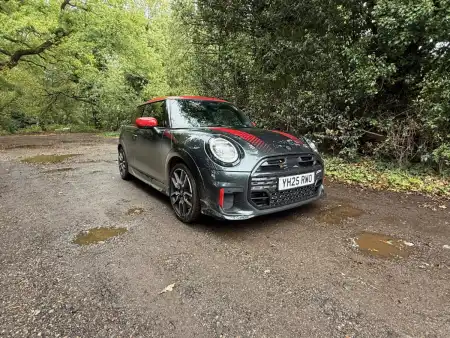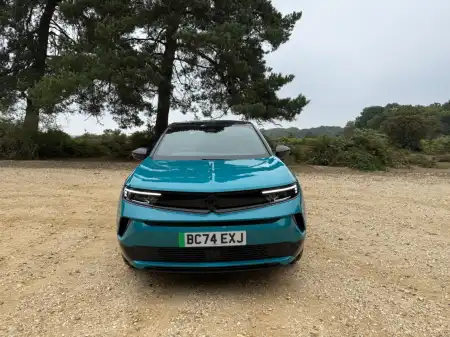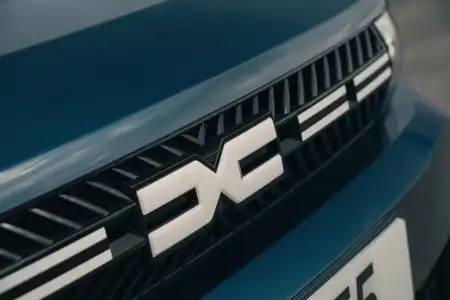- Extended range makes the Leaf viable for everyday motoring
- Genuinely practical family car
- New design language means it no longer stands out as being a little weird
- Without access to a rapid charger, refilling takes a loooooong time
- Still expensive compared to traditionally powered rivals
- Forthcoming version with an even bigger battery might be worth waiting for
Introduction
The Nissan Leaf has gone down well, but it’s showing its age, and technology has moved on. That’s why this new Leaf takes all that made the previous model so popular, but adds extra range, more style, improved technology and sharpened handling.
It remains a pure-electric car, driven by an electric motor up front that’s powered by a 40kWh battery pack that’s hidden away underneath the car. Despite that, Nissan promises room for five, a decent boot, and a charging network that will make living with the Leaf as easy as living with a Golf.
It’s about time, too, as rivals from Volkswagen, Toyota, Honda and even Tesla are bringing new electric cars to the market. Nissan needed to up its game, so we drove the new car to find out if it has.
On The Road
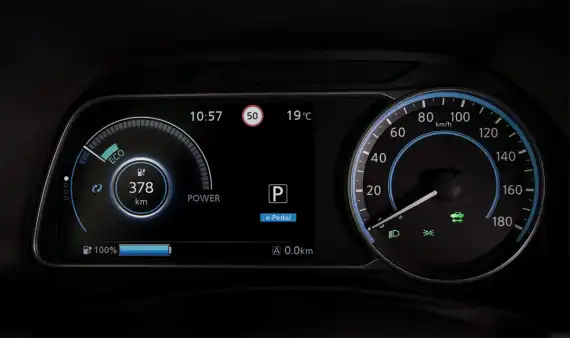
Performance
When talking about electric cars, your understanding of performance has to change slightly. There’s instant torque available from the motor, which means there’s no waiting around for a turbo to spool up or an engine to hit its optimum rev range. Instead the Leaf just darts forward, propelled by all 320Nm of torque released in an instant. It continues on its way to 62mph in just 7.9 second, but by then it’s already running out of steam.
With a top speed of just 90mph, there’ll be no lap records set in the Leaf, and it does feel rather lethargic once speeds are nudging north of 50mph, but there’s always enough to keep up with motorway traffic.
It’s in urban environments that the electric nature of the car makes itself felt most though, where it’s a zesty number that always feels eager to lunge from one tiny gap to another, snaking through traffic at will. That there are no gears makes that easier, while the new ‘e-Pedal’ makes city driving a breeze - more on that later.
That bigger battery promises to carry the Leaf up to 242 miles when driven gently. After covering some 100 miles or so of twisty, mountainous roads, climbing to 10,000 feet on the way, before topping up with some high-speed motorway runs, the Leaf’s on-board computer suggested we had 50 miles left to run. That’s a theoretical range of 150 miles, but when driven harder than most would consider reasonable. Recharging can be done in just 40 minutes from a DC rapid charger, while home charging units can fill the battery in seven hours or so. If you’re left with just access to a normal three-pin socket, an empty to full charge will take a full day and night.
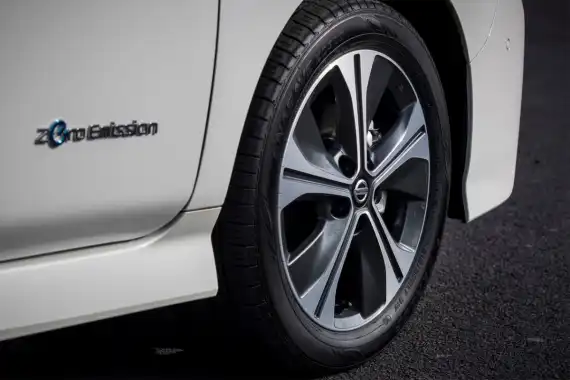
Ride Handling
Nissan has made some significant changes to the Leaf to try to improve its handling prowess, but it’s fair to say that few people will be taking the car to a track day to push it to its limits. The low-resistance tyres undoubtedly aid economy, but there’s less grip than you’ll find on any of the Leaf’s rivals, which means the mountain roads we tested the car on became a little more challenging than they could do. That said, the balance always remained entirely neutral, with no surprises from either end of the car as the limit got closer.
The flip side is that the ride quality is impressive, with the independent suspension working with tall-sided tyres to smooth out most of the bumps that the countries roads provide. It glides from one undulation to another, generally unworried by sudden surface changes, but there is an ongoing jiggle at low speeds that never seems to settle fully.
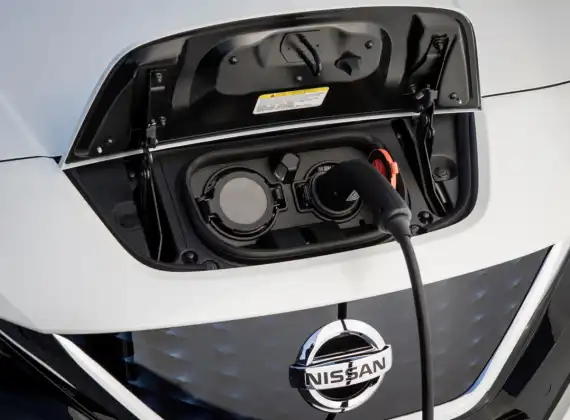
Styling
As there’s no engine, the Leaf gets a head start on refinement. It’s eerily quiet, with the near-silent motor propelling the slippery car through the air with barely any wind noise. Even tyre noise is kept relatively well controlled, which leaves a cabin that Nissan claims is around 30% quieter than any similar car. It’s not something we doubt, either.
Queueing in traffic becomes more bearable too as, when stationary, there’ literally no noise at all. Everything is silent, but still working and ready to get going the moment you touch the throttle.
The throttle needs special mention. Dubbed e-Brake, it’s possible to drive the Leaf for the majority of the time without ever using the brake pedal. Put your foot down and the car accelerates, but lift off a little and it starts to slow, converting kinetic energy to extra range. Lift off more and it slows more forcefully, until you lift off entirely and the car starts slowing as if braking firmly. It’ll bring the car to a stop and hold it there, ready for you to put your foot back down. At no point is the brake pedal required, but it’s still there for those times when you really need to stop. It takes some explaining, and some getting used to, but the system actually works, and works well. It helps conserve battery energy, and give you one less thing to concern yourself with while driving.
That, combined with the lack of any gears at all - just select Drive and you’re off - makes the driving environment as refined as anything this side of a Rolls-Royce.
In The Car
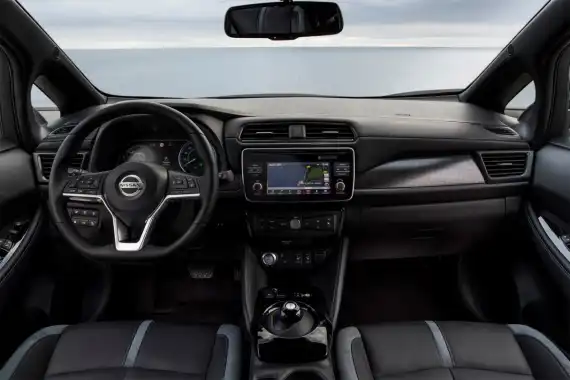
Behind the Wheel
There’s been plenty of work done on the interior of the Leaf, but it’s still a little grey and sombre. Behind the flat-bottomed and somewhat sporty steering wheel lies a semi-digital dashboard that presents relevant information to the driver using big, bright, icons.
An infotainment touchscreen dominated the centre of the dashboard looking all modern and shiny. However, it’s not that easy to use and the navigation graphics are years behind the best. The good news is, for the first time on a Nissan, both Apple CarPlay and Android Auto are integrated into the system, making it possible to use the systems we all know best from our smartphones.
Elsewhere there are haphazardly positioned buttons - there are eighteen on the steering wheel alone, a handful hidden behind the left knee and some on the centre console. Some of them cover similar functions, but are spread apart for some reason that made sense in an office in Japan.
It’s not all bad though, as the heating and ventilation controls are easy to understand and use, and there’s no shortage of places to put bottles, cups or bananas. The kids might not be so happy with the inclusion of just one single USB port though.
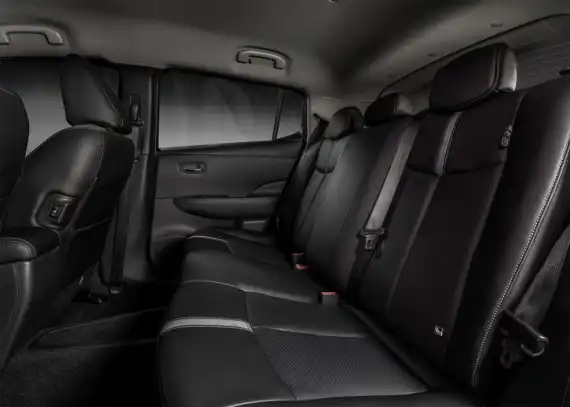
Space & Practicality
If families are going to be prepared to move to greener motoring options, then the cars need to fulfill their needs. Fortunately the Leaf does a pretty good job of being a perfectly normal car. Up front there’s enough space to put of any sensations of claustrophobia, while three kids could squeeze in the back without being too uncomfortable. Adults in the rear will find headroom a little tight, but it’s not bad.
Unexpectedly, there’s a really decent boot that’s able to hold 435 litres of family detritus. That’s 55 more than a Volkswagen Golf, by way of comparison. The rear seats fold down too, extending the load area, but they remain a long way from flat so long loads will still need a bit of work.
Cubby space is notable, with holes everywhere to accommodate bottles, phones and sweet wrappers, but there’s no centre armrest in the rear to keep bickering children apart.
Ownership
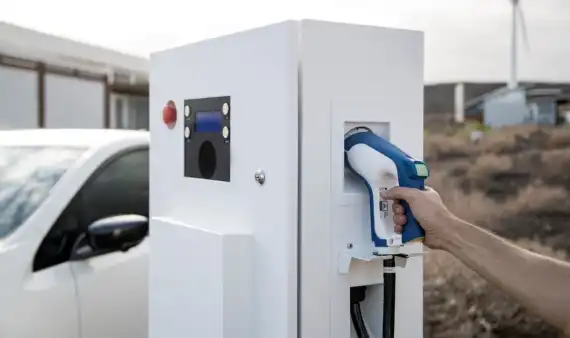
Running Costs
With no car tax to pay, exemption from any current congestion charges, and no petrol to pay for, the Leaf is naturally a cheap car to run. Even when paying for the electricity, it’s far cheaper than popping down to Shell for some Unleaded. No exhaust emissions means a 0g/km of CO2 figure, which means an escape from car tax and, for company drivers, a meagre 9% BIK rate.
Service intervals are every 18,000 miles and, with just one major moving part, there’s very little to go wrong. Maintenance costs, according to Nissan, should be at least 25% cheaper than a similar petrol car, although we feel there’s room for an even bigger difference there.
The only fly in the ointment is predicting what successive governments might do in terms of taxation. BIK rates are rising in April, and it’s not inconceivable that tax is added to charging points or EV cars themselves, but there are no announced plans at this stage.
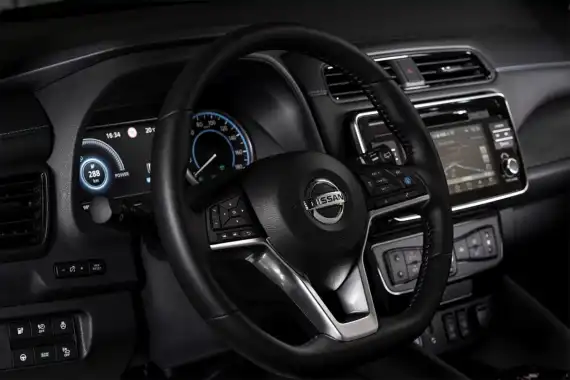
Quality & Reliability
Nissan claims the battery pack is 100% reliable, and have assured us that there have been no recorded major failures, which should go some way to reassure buyers. An eight year warranty on the battery should go even further, while the fact that electric cars are actually incredibly simple machines should leave less room for things going wrong.
There are no issues with the perceived build quality of the car either, with no rattles or creaks despite some rather enthusiastic testing across a variety of surfaces. The Leaf just takes what’s thrown at it and absorbs it all.
Only extreme weather conditions will start making a difference to the car, and even then it’s just in terms of range and performance. Very cold and very hot weather will have dramatic effects on the range, but as soon as things return to normal that range will come back, so nothing to fear there.
A five year warranty on the rest of the car, limited to 100,000 miles, adds a further degree of reassurance.
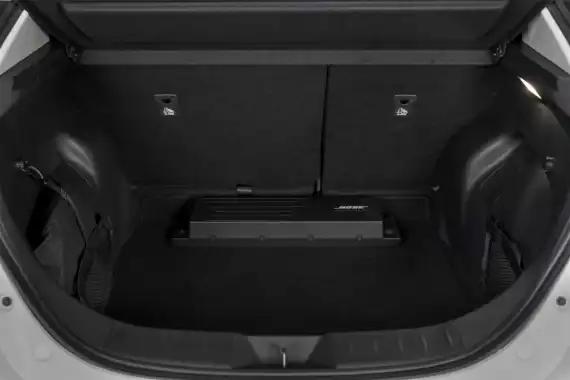
Safety & Security
The Leaf hasn’t been tested by EuroNCAP yet, but Nissan’s own testing shows it’s expecting the full five-star rating. The battery pack gets extra attention and there are no reports of any incidents post accident.
There’s a truck load of safety equipment included with even the entry level Leaf to keep the car on the straight and narrow, including lane departure warning, autonomous emergency braking, cross traffic alert, pedestrian detection, blind spot warning and six airbags. A spare wheel is optional, with the Leaf fitted with a temporary repair kit.

